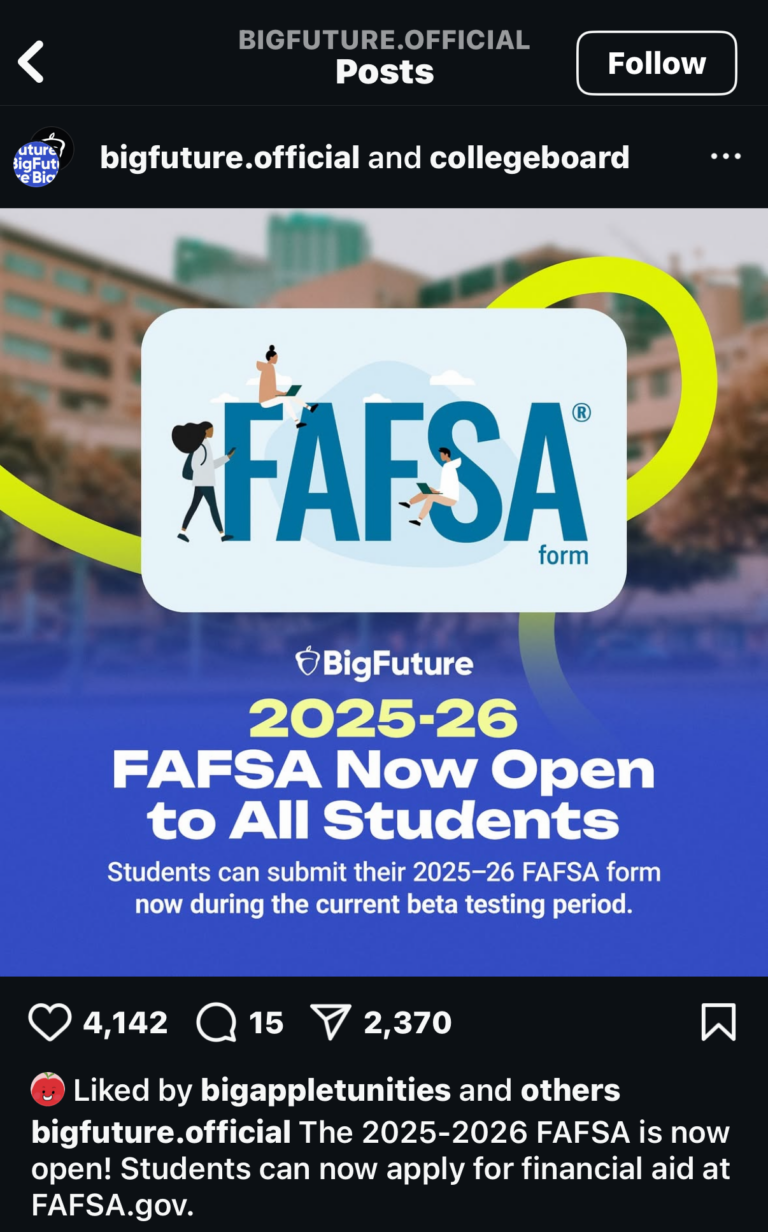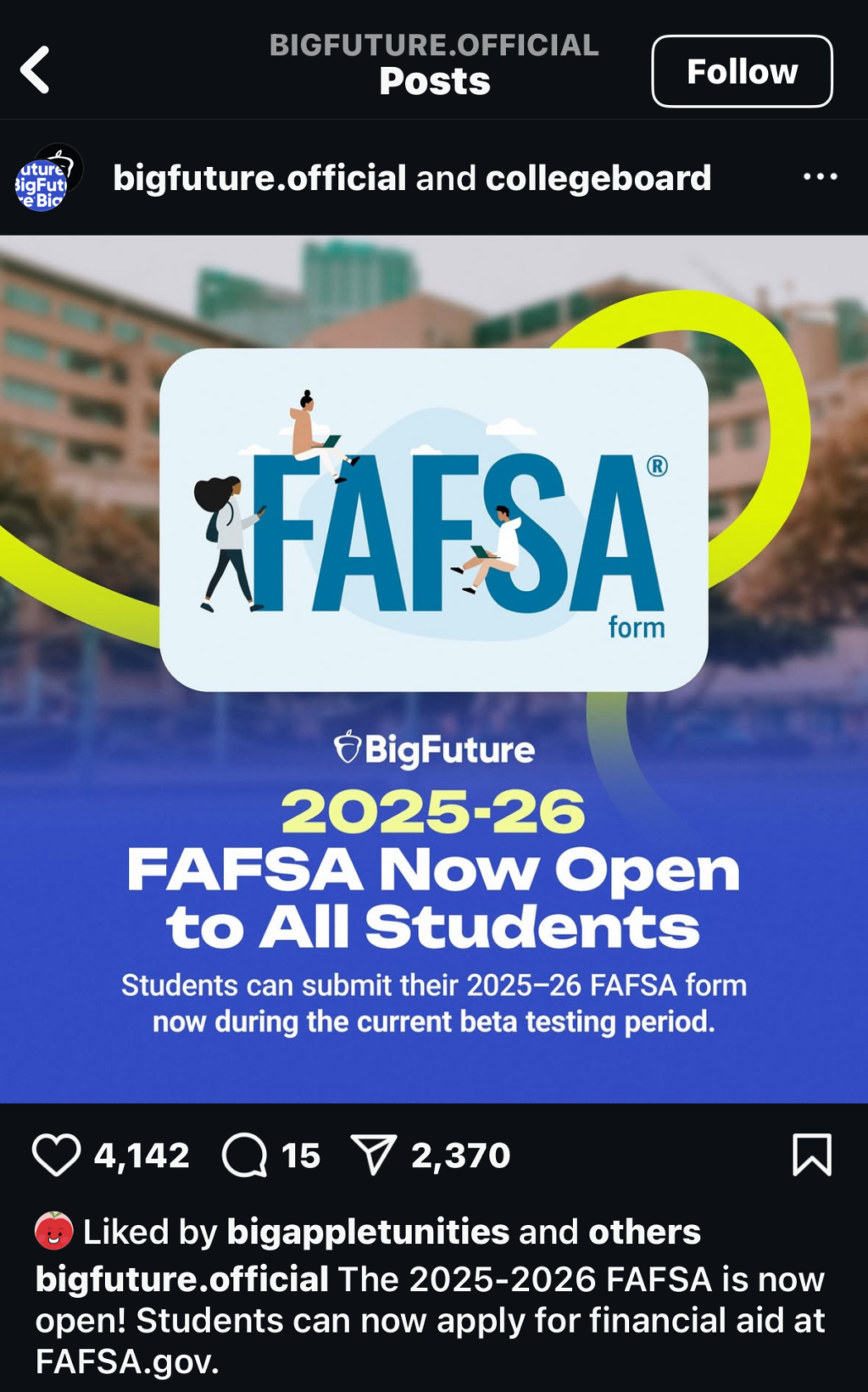
Spring is a time of year for hope. The weather begins to warm, flowers bloom, school slows down, and summer sports are beginning to be played.
For seniors in high school, it is one of the most exciting times of the year. Four years of hard work and dedication lead to the moments when they open their college decision letters. Some will be rejected from their dream schools, some will be accepted; but no matter what, they ultimately prepare to take control of the next four years of their lives.
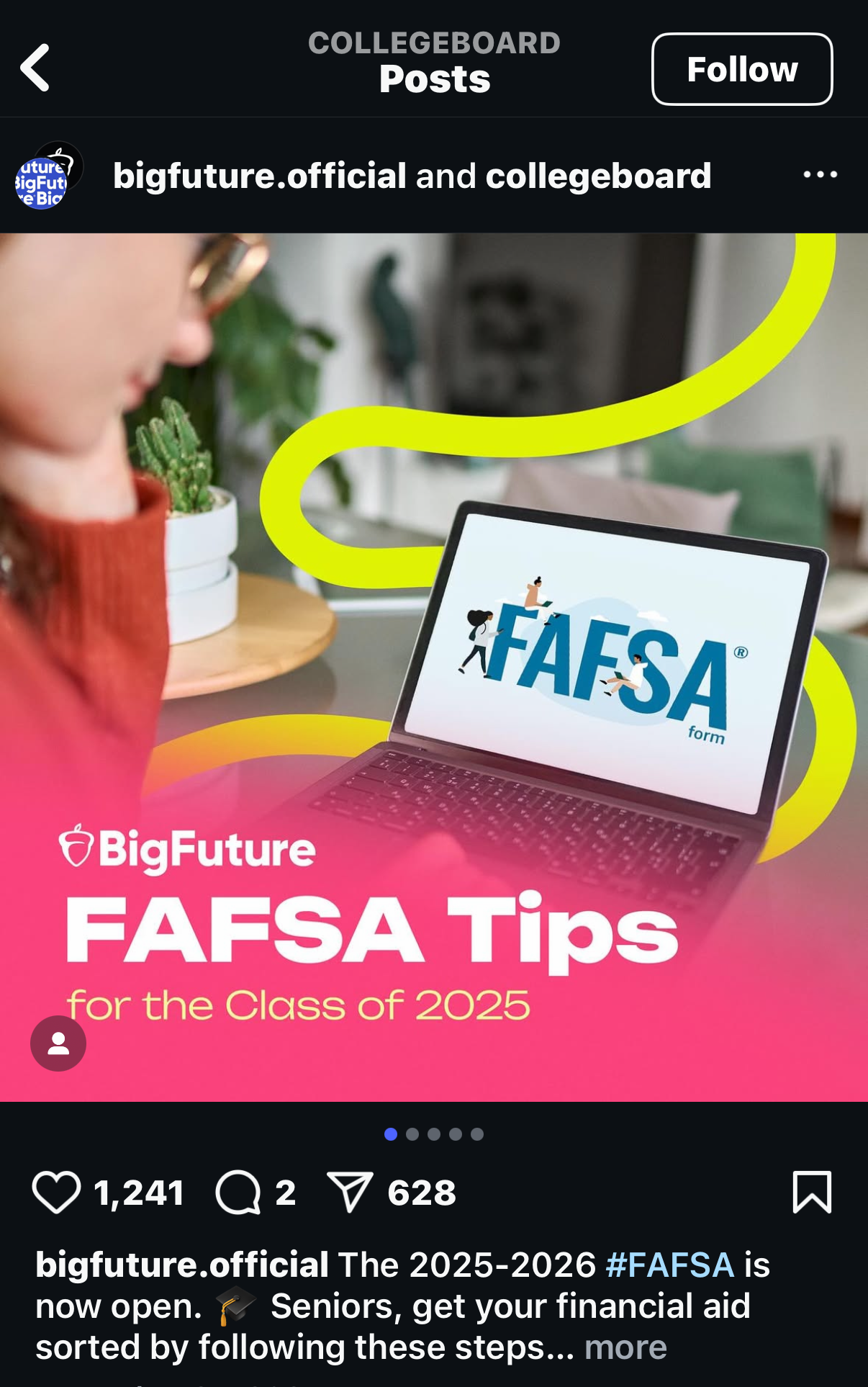
However, after the euphoria and adrenaline fill your body from opening your acceptance to your dream college, one thing cannot get off your mind: How am I going to pay for this? College tuition has skyrocketed in just the past 15 years. For example, Amherst College is one of the most expensive colleges in the country, with tuition nearing 70k—and that is not even factoring in room and board and other costs. Essentially, college has become entirely unaffordable for many, causing some to choose cheaper options even when they get into better schools.
With recent news of the Department of Education’s layoffs and possible dismantling, many are wondering what will happen to FAFSA and other federal funding programs, which if they were to go away, or be defunded, would leave millions of Americans unable to pay for college.
Even without the programs going away, many argue the system is broken in its current state. Middle-class families who are also unable to afford the mammoth price tags of colleges get little to no federal aid, and low-income families do not get nearly enough to be able to afford their tuition.
Malden, being a low-income community, runs into many issues with the Free Application for Student Aid (FAFSA) and College Scholarship Service (CSS) profiles required by colleges to determine financial aid awards.
Many seniors in Malden run into this same frustration with not being able to afford the top colleges in which they get into. Senior Helen Xie noted that the financial aid system should be more “individualized to help students more personally,” which would “create more of an understanding between the student and their situation to however much they need in aid.”
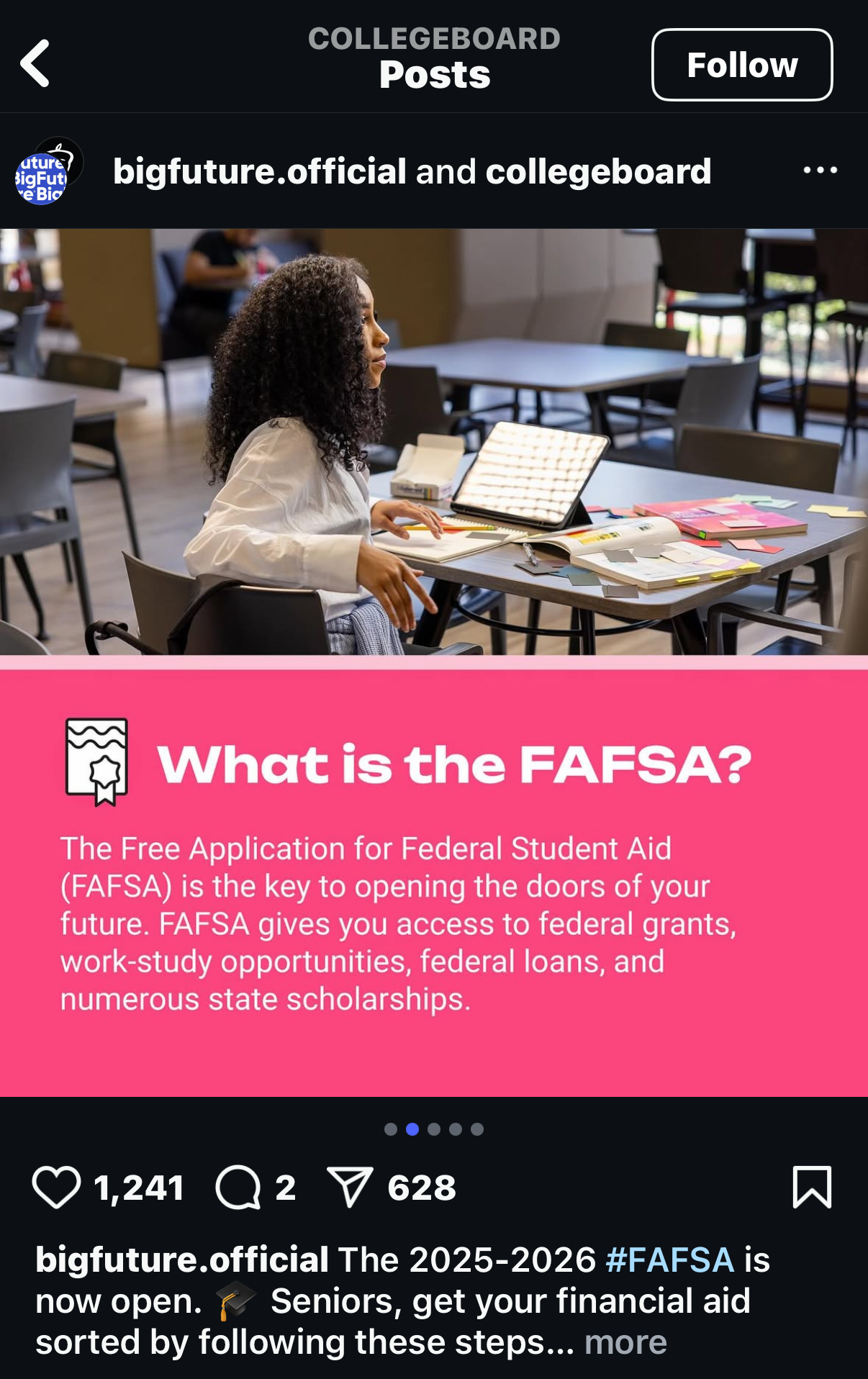
Similarly to many, senior Remi Santos, who is committed to Northeastern University next fall, commented that the system is “flawed,” and that it barely “takes a student’s whole story into account, which devalues them into just their parents’ income.” Santos affirms that reform is needed to the financial aid system—especially because of the climate of the country economically with high inflation and unemployment.
Another senior, Jennifer Slawson, does understand that colleges cannot meet the needs of every single student; however, it disappoints her that “students often have to choose their decisions solely based on money, rejecting their dream school due to a lack of financial aid.”
Slawson herself noted she has “been really unlucky with receiving aid for colleges that are not willing to negotiate despite my circumstances, and some schools have even given me zero dollars in aid.” She is concerned with “changes in recent administration that may make financial aid even more limited for those that truly need it the most. This is because education is something every student deserves, and the income of your family should not determine your opportunities for success.”
Senior Merari Flores had her own issues with the process. “I think they don’t take into consideration a lot of circumstances,” voiced Flores. “If they do, the process for these circumstances to be considered is so long and such a hassle… There needs to be a change in the way they handle cases with students, like possibly hiring more people to review these cases and have more time… they just need to have more people and more time in order for students to properly be ‘examined’ on their financial aid.”
Amanda Rosario, the uAspire College Affordability Advisor at Malden High who helps students sort their financial aid documents out and choose more affordable options, was asked different questions regarding financial aid and the current issues with it:
1. What is the most common problem students have when applying for financial aid?
Some of the most common issues students run into are:
- Account issues: For the FAFSA, MASFA, CSS Profile, most students get stuck creating their accounts. The most common issues for the MASFA and CSS Profile are confirmation emails not sending to finish account setup and these can usually be resolved by a customer service call. The FAFSA is a bit more difficult to troubleshoot because if the Social Security Administration can’t match you or you have to reset an old parent account you have to call for help. Since they’re understaffed you may be on the phone for a bit trying to get to someone who can fix the issue.
- Verification: Many students are asked in their application portals to send extra information because the financial aid office needs it but they don’t notice because they haven’t checked after an acceptance or they can’t find the financial aid to do list. Schools can’t give out aid offers until all these papers and verification steps are finished.

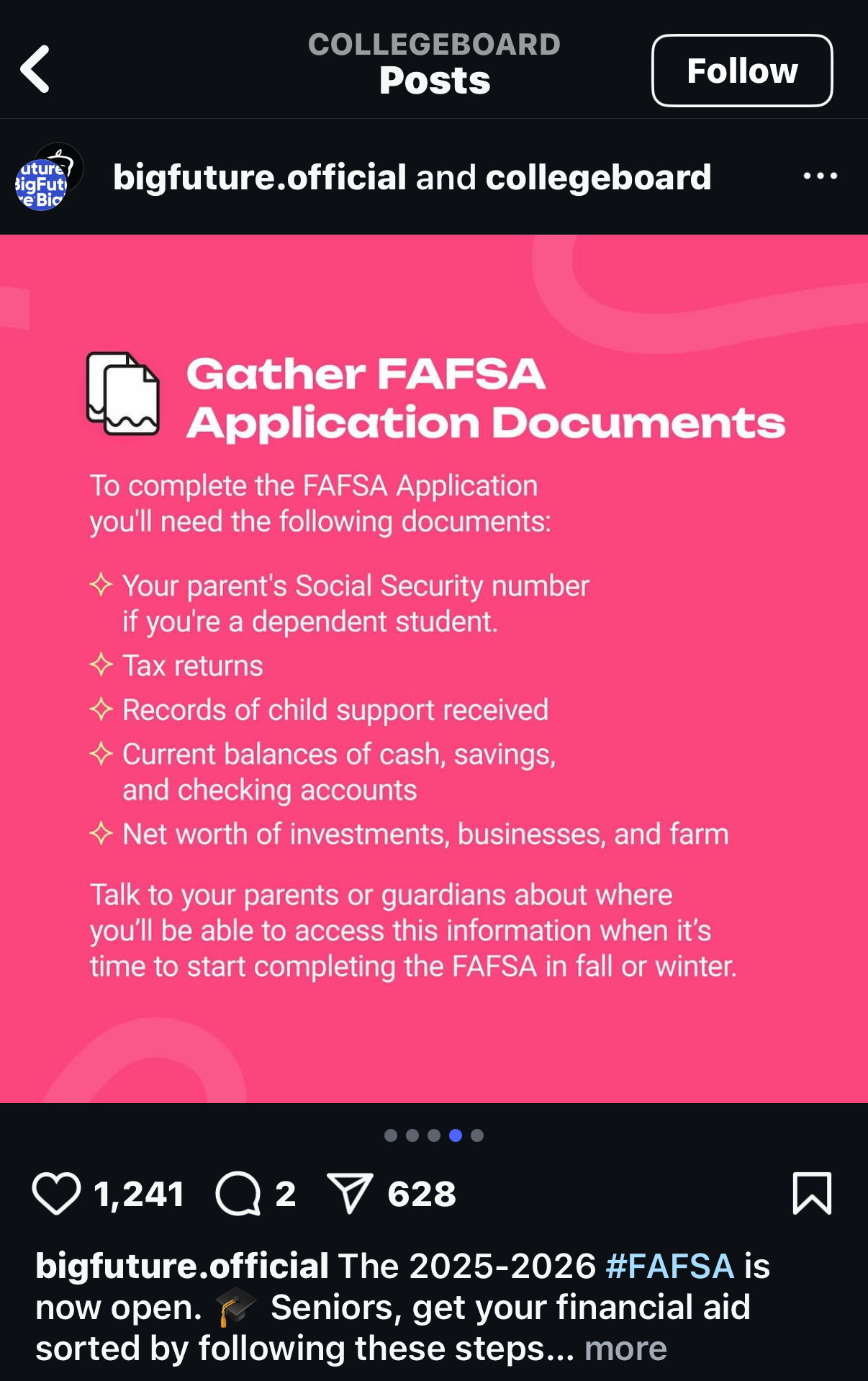
2. What do you think can be fixed about the FAFSA/CSS system to make the process easier for students?
- CSS Profile
- Noncustodial Parent Profiles: This is more on the end of the schools but most CSS schools require info from all biological parents in addition to any spouses they may have. Some students are able to provide this and do a noncustodial profile, but it is difficult to connect sometimes. It is easy to get confused reading the instructions, I still do after filling them out for three years, so they should have a system similar to the FAFSA invite that’s NCProfile specific. They also need to standardize the waiver process. More schools are moving toward the College Board waiver but there are still some schools that make it difficult to request their school-specific waiver.
- Cost to submit: If your family makes over 100,000 or you have a parent who lives outside the US you need to pay to submit because the College Board charges you.
- Massachusetts has the Massachusetts Application for State Financial Aid (MASFA) for students who have lived here for a while and are not FAFSA eligible and don’t have a student visa. While the form is pretty straightforward this year the steps for what to do after aren’t so clear because the process of students who can’t fill out the FASFA being eligible for state aid is still evolving.
- Increase staffing for FSA: Last year it was almost impossible to get through to Federal Student Aid when the new FAFSA experienced its many glitches. They hired more people and it was easier for the majority of this school year to get access to help from a trained employee at FSA. Recently it’s been harder to get through for help because their staff has been downsized. I’d love to see them back at full capacity because it made a visible difference in students being able to access help
- Connection To the Common App Portal: Probably never going to happen because of security/privacy reasons, but there are too many portals and accounts to keep track of. I’d love to see something similar to or connected to the common app where students could get their decisions and aid offers in one place.
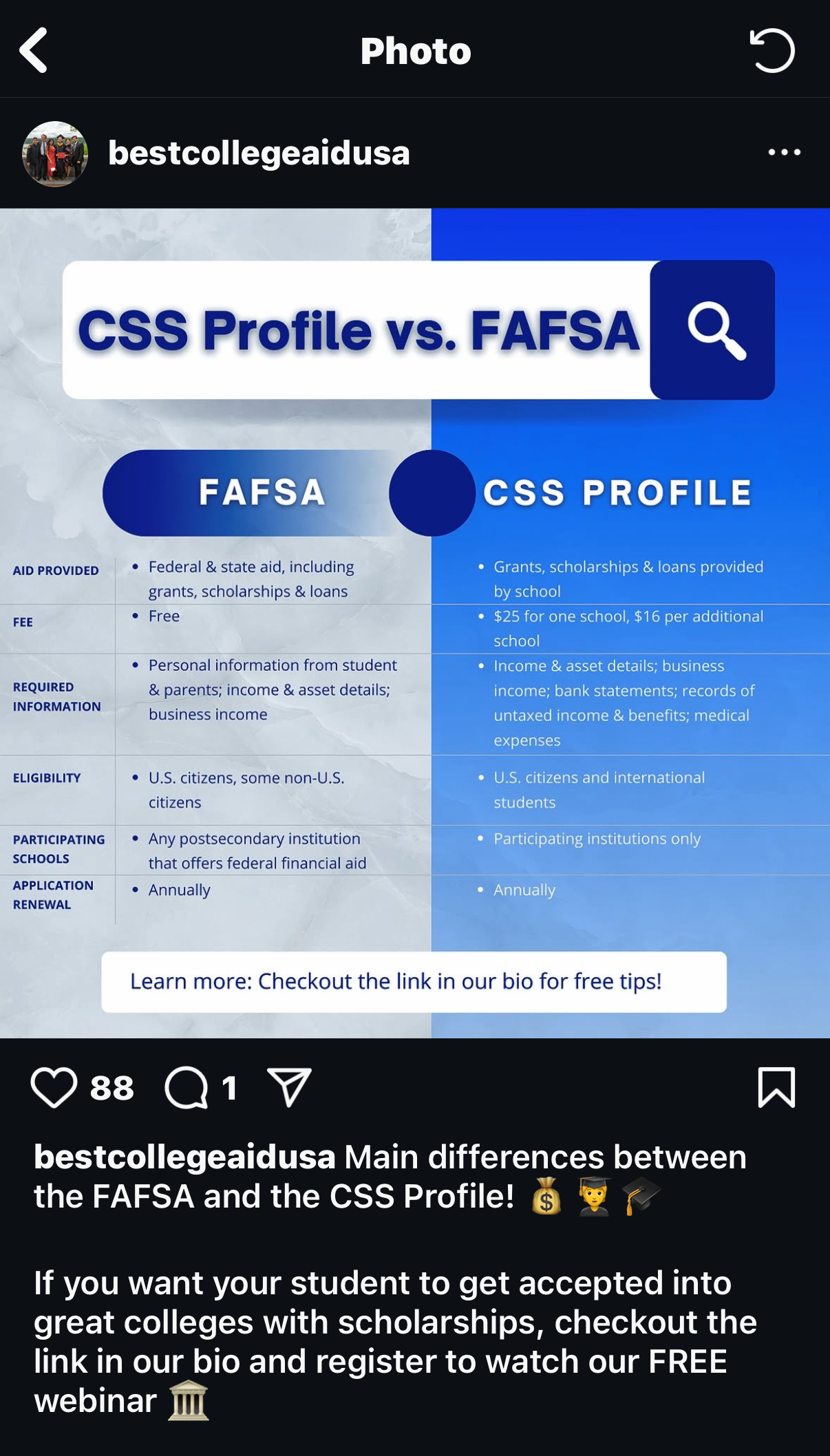
3. Will prices for colleges keep going up?
- Unfortunately, yes. College prices have risen and are expected to continue rising. For example, when I went to Suffolk tuition in 2020 was $35,440 (before aid!), but it has risen to $47,500 for students starting this year.
- Free Community College: Community colleges are free to low-income students in the state of MA as long as you’ve lived here a few years and submitted a FAFSA/ MASFA.
- Free tuition programs: At some public schools students can get their tuition and fees covered (only have to pay room and board if they dorm) if their family makes under a certain amount according to the FAFSA/MASFA. UMASS system is $75,000. Bridgewater is $100,000.
4. What can help make the financial aid process easier for students?
- Apply early: There’s more money available and it gives you time to troubleshoot.
- Ask for help: It’s free and it’s literally my job to help out!
- Stay organized.
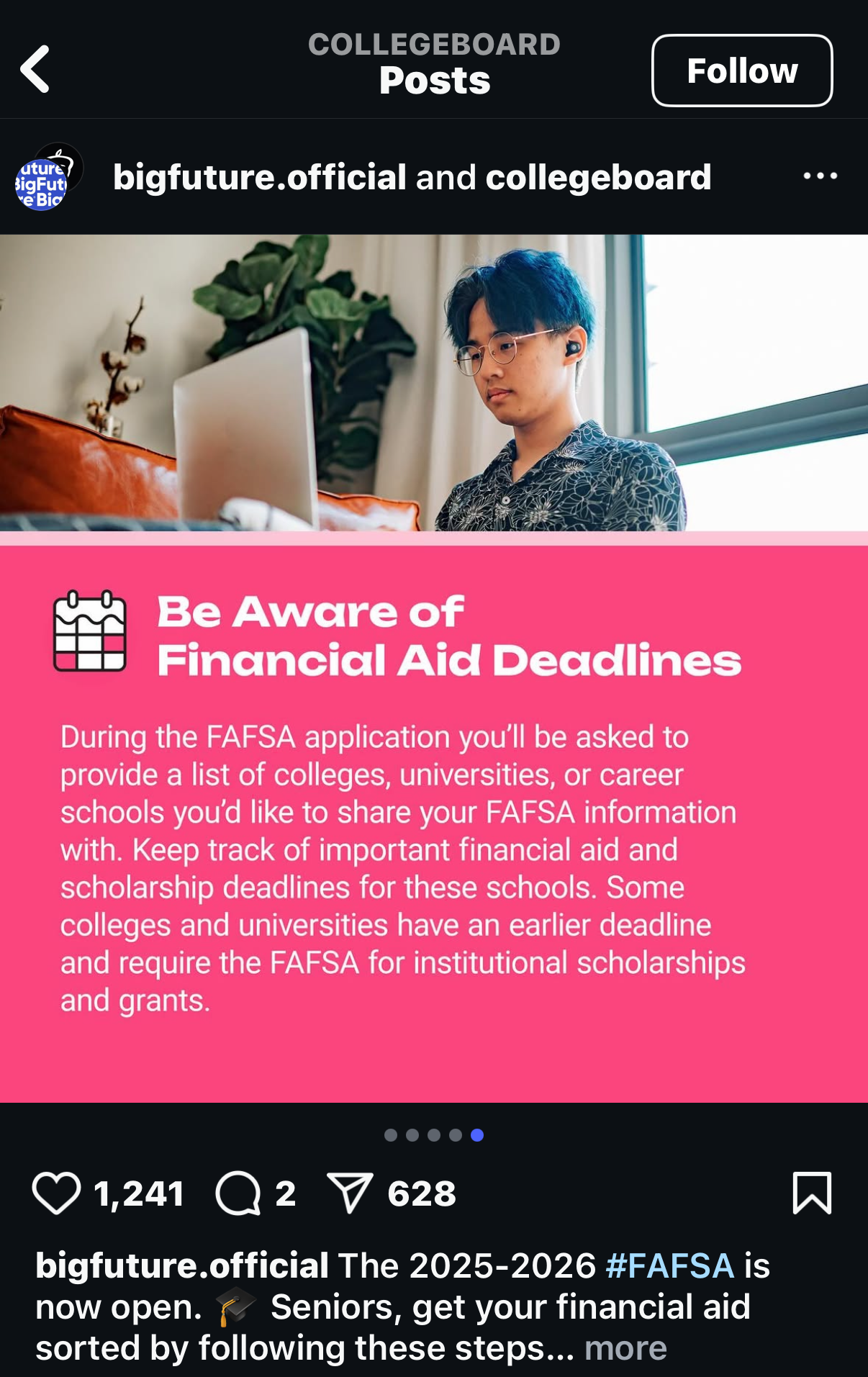
5. How would the Department of Education being eliminated affect student aid/loans?
- When President Trump signed the executive order dismantling the Department of Education, he said that the student loan program will move to another agency. This is a separate agency from the Department of Education. Specifics of a plan to move the loan program have not been announced. The loan program has not moved. Furthermore, current law says the Office of Federal Student Aid (FSA) is the administrator of the student loan portfolio. It is not clear how these responsibilities could be legally moved without a vote of Congress. We do not know if the student loan program will ultimately be moved. If it is, we expect there will be an additional lawsuit against it.
For any further questions contact Amanda Rosario at arosario@maldenps.org




